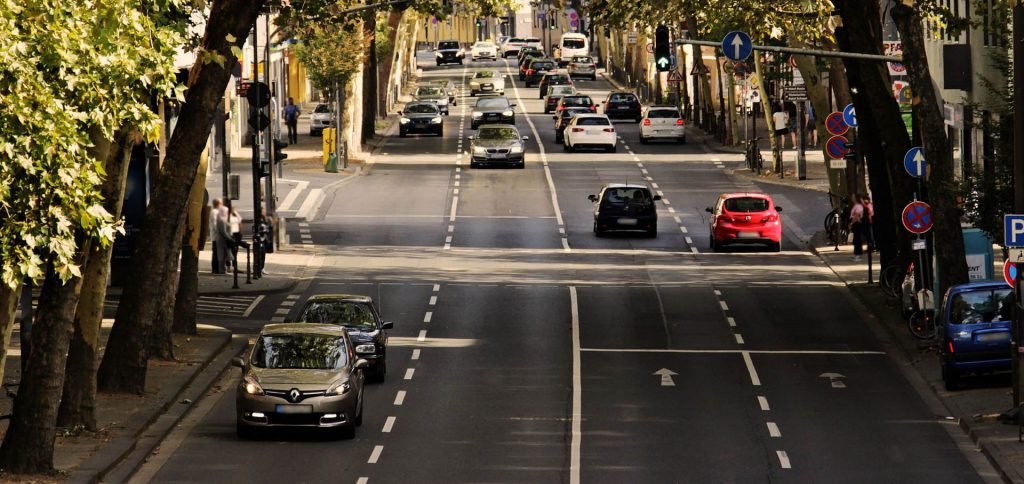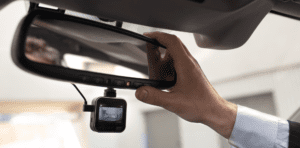Compare cheap gap insurance
✔ Compare cheap gap insurance quotes
✔ Over 110 insurance providers
✔ Get a quote in minutes
✔ Great savings


- What is GAP insurance?
- How does GAP insurance work?
- Is GAP insurance just for new cars?
- What types of GAP insurance are there?
- Do I need GAP insurance?
- How much does GAP insurance payout?
- How much does GAP insurance cost?
- How can I get cheaper GAP insurance?
- How do I claim on GAP insurance?
- How do I buy GAP insurance?
Our guide to Guaranteed Asset Protection (GAP) insurance is designed to help you understand how this type of cover works and how you can obtain the protection you need.
When buying a new car, it is easy to get caught up in the excitement, but unfortunately, unexpected events such as theft or accidents can occur and leave you financially vulnerable. Standard car insurance policies will only pay out the current value of the vehicle at the time of the incident, which is often significantly less than the original purchase price. This is due to the fact that new cars can lose up to 40% of their value in the first year, as per the AA figures. GAP insurance addresses this gap by covering the difference between the car’s value and the amount still owing on the loan or lease.
What is GAP insurance?
Guaranteed Asset Protection (GAP) insurance is a type of cover that helps protect car owners from financial loss in the event of a total loss of their vehicle. This type of insurance is particularly useful for those who have purchased a new car, as new cars can lose a significant amount of value in the first year they are on the road.
When a car is stolen or written off in an accident, a standard car insurance policy will only pay out the current value of the vehicle, which is often much less than the original purchase price. This is because new cars can lose up to 40% of their value in the first year, as per figures from the AA. GAP insurance covers this shortfall, and it can also be used to meet any remaining loan or lease repayments on the car.
GAP insurance can be added to a standard car insurance policy or purchased as a standalone policy. It is important to understand that GAP insurance is not mandatory and it is not required by law. However, if you have financed or leased your car, the lender may require you to have GAP insurance.
When considering GAP insurance, it is important to carefully read the terms and conditions of the policy and understand what is covered and what is not. It is also important to compare the cost of GAP insurance with the potential financial loss you may face in the event of a total loss of your vehicle.
In summary, GAP insurance is a type of cover that helps protect car owners from financial loss in the event of a total loss of their vehicle. It is particularly useful for those who have purchased a new car, as new cars can lose a significant amount of value in the first year they are on the road. It can be added to a standard car insurance policy or purchased as a standalone policy and it is important to understand the terms and conditions of the policy and the potential financial loss you may face in the event of a total loss of your vehicle.
How does GAP insurance work?
Guaranteed Asset Protection (GAP) insurance is a type of cover that helps protect car owners in the UK from financial loss in the event of a total loss of their vehicle. It is particularly useful for those who have purchased a new car, as new cars can lose a significant amount of value in the first year they are on the road.
When a car is stolen or written off in an accident, a standard car insurance policy in the UK will only pay out the current market value of the vehicle, which is often much less than the original purchase price. This is because new cars can lose a significant amount of value in the first year. GAP insurance covers this shortfall and it can also be used to meet any remaining loan or lease repayments on the car.
The way GAP insurance works is that, in the event of a total loss, the insurance company will pay the difference between the car’s actual cash value (ACV) and the amount still owing on the loan or lease. For example, if the ACV of the car is £20,000 and the amount still owing on the loan is £25,000, GAP insurance will cover the £5,000 difference.
It is important to note that GAP insurance is not mandatory in the UK, and it is not required by law, but if you have financed or leased your car, the lender may require you to have GAP insurance. It is also important to carefully read the terms and conditions of the policy and understand what is covered and what is not. It is also important to compare the cost of GAP insurance with the potential financial loss you may face in the event of a total loss of your vehicle.
Is GAP insurance just for new cars?
GAP insurance, or Guaranteed Asset Protection insurance, is not limited to just new cars. It can also be beneficial for used cars, especially those that have been financed or leased.
When a car is stolen or written off in an accident, a standard car insurance policy will only pay out the current market value of the vehicle, which may be less than what is still owed on a loan or lease. This is where GAP insurance comes in, as it can help cover the difference between the car’s actual cash value and the amount still owing on the loan or lease.
While it is true that new cars can lose a significant amount of value in the first year, used cars can also depreciate quickly and may also be at risk of total loss. Therefore, GAP insurance can be beneficial for anyone who has financed or leased a car, regardless of whether it is new or used.
It is important to note that GAP insurance is not mandatory and not required by law, but some lenders may require you to have it if you have financed or leased your car. It is also important to carefully read the terms and conditions of the policy and understand what is covered and what is not.
What types of GAP insurance are there?
Return to Invoice GAP insurance: This type of GAP insurance covers the difference between the car’s market value at the time of the total loss and the original purchase price of the car.
Return to Value GAP insurance: This type of GAP insurance covers the difference between the car’s market value at the time of the total loss and its value at the time the GAP insurance policy was taken out.
Finance GAP insurance: This type of GAP insurance covers the difference between the car’s market value at the time of the total loss and the outstanding balance on a finance agreement, such as a car loan or lease.
Lease GAP insurance: This type of GAP insurance covers the difference between the car’s market value at the time of the total loss and the residual value of the car lease.
Contract Hire GAP insurance: This type of GAP insurance covers the difference between the car’s market value at the time of the total loss and the outstanding balance of a contract hire agreement.
Vehicle Replacement GAP insurance: This type of GAP insurance covers the difference between the car’s market value at the time of the total loss and the cost of a replacement vehicle of similar make, model and specification.
New for Old GAP insurance: This type of GAP insurance covers the difference between the car’s market value at the time of the total loss and the cost of a new replacement vehicle of the same make, model and specification.
It’s important to note that the availability of the above types of GAP insurance may vary depending on the insurance provider, and it is important to carefully read the terms and conditions of the policy and understand what is covered and what is not.
Do I need GAP insurance?
GAP insurance, also known as Guaranteed Auto Protection insurance, is a type of cover that helps to protect car buyers in the event of a total loss. If a car is stolen or destroyed in an accident, and the insurance payout is less than the outstanding loan balance, GAP insurance can help to cover the difference.
Whether or not you need GAP insurance depends on your individual circumstances. If you are financing a car and have a high loan-to-value ratio, or if you are leasing a car, you may want to consider purchasing GAP insurance. This is because in these situations if your car is totalled, the insurance payout may not be enough to pay off the outstanding loan or lease balance.
However, if you are purchasing a car outright or have a low loan-to-value ratio, you may not need GAP insurance. It is important to speak with your auto insurance agent and review your policy to determine if GAP insurance is right for you. Additionally, GAP insurance can be added as additional cover to your auto insurance policy and it is generally inexpensive.
Overall, GAP insurance can provide peace of mind and financial protection in the event of a total loss, but it may not be necessary for all car buyers. It’s important to weigh the cost of GAP insurance against the potential benefits and your own financial situation.
How much does GAP insurance payout?
GAP insurance, or Guaranteed Auto Protection insurance, is designed to cover the difference between the actual cash value (ACV) of a vehicle and the outstanding balance on a car loan or lease. If a car is stolen or destroyed in an accident, and the insurance payout is less than the outstanding loan balance, GAP insurance can help to cover the difference.
The amount that GAP insurance pays out can vary depending on the specific policy and the terms of the loan or lease agreement. Some GAP insurance policies may pay out the full difference between the ACV of the vehicle and the outstanding loan balance, while others may have limits or caps on the payout amount.
It is important to carefully review your GAP insurance policy and understand the terms and conditions before purchasing. Some policies may have exclusions or restrictions that can limit the amount of payout. For example, some policies may not cover the gap if the vehicle is stolen or if the car is considered a total loss due to hail, flood, or other natural disasters.
It’s also important to note that GAP insurance typically only covers the difference between the outstanding loan balance and the actual cash value of the vehicle, and not any additional costs such as taxes, fees, or other expenses.
It’s always important to review your policy and understand the terms, conditions and the maximum amount of payout the policy covers.
Overall, while the amount that GAP insurance pays out can vary, it can provide important financial protection in the event of a total loss and help to cover the gap between the insurance payout and the outstanding loan or lease balance.
How much does GAP insurance cost?
GAP insurance, or Guaranteed Auto Protection insurance, is a type of cover that can help to protect car buyers in the UK in the event of a total loss. The cost of GAP insurance can vary depending on a number of factors, including the make and model of the vehicle, the length of the loan or lease term, and the cover level selected.
The average cost of GAP insurance in the UK is typically between £250 and £450, although it can be higher or lower depending on the specific policy and the terms of the loan or lease agreement. Many car dealerships and insurance companies offer GAP insurance as an added option when purchasing a new or used vehicle, but it can also be purchased independently.
In most cases, GAP insurance is relatively inexpensive, especially when compared to the potential financial loss that can occur if a car is stolen or destroyed in an accident. Additionally, GAP insurance can be added as an additional cover to your auto insurance policy.
It’s important to shop around and compare policies to find the best price and cover for your needs. Some insurance companies may offer special deals or discounts on GAP insurance. It’s also important to note that some lenders or lessors may require GAP insurance as a condition of the loan or lease agreement.
Overall, while the cost of GAP insurance can vary, it is typically a relatively inexpensive form of cover that can provide important financial protection in the event of a total loss. And it’s always important to consider the potential benefit and cover that GAP insurance provides when compared to the cost.
How can I get cheaper GAP insurance?
- Compare prices: Shop around and compare prices from different insurance providers to find the best deal on GAP insurance. Comparoo compare over 110 GAP insurance providers to get the prices so you can secure the best deals.
- Bundle policies: Consider bundling GAP insurance with your other insurance policies, such as car insurance or home insurance, to potentially qualify for discounts.
- Look for discounts: Check if you qualify for any discounts offered by insurance providers, such as a multi-car discount or a safe driver discount.
- Pay annually: Some insurance providers may offer lower rates for customers who pay for their GAP insurance policy annually instead of monthly.
- Choose a higher excess: A higher excess means you will pay more out of pocket in the event of a claim, but it can also result in lower monthly or annual premium payments.
- Look for special deals or promotions: Some insurance providers may offer special deals or promotions on GAP insurance at different times of the year.
- Use a broker: A broker can help you compare policies and prices from multiple insurance providers to help you find the best deal on GAP insurance.
- Opt for a lower cover level: GAP insurance policies can vary in their cover level, and opting for a lower cover level can result in a lower premium payment.
- Check with your lender: Some lenders may offer GAP insurance at a lower price than an insurance provider, so it’s worth checking with your lender if they offer this type of cover.
It’s important to remember that GAP insurance costs can vary based on the factors such as the make and model of the vehicle, the length of the loan or lease term, and the cover level selected. By considering these points and shopping around, you can find a GAP insurance policy that is both affordable and provides you with the cover you need.
How do I claim on GAP insurance?
If your car is stolen or destroyed in an accident and the insurance payout is less than the outstanding loan balance, GAP insurance can help to cover the difference. However, it’s important to understand the process for making a claim on GAP insurance in order to ensure that your claim is handled smoothly and efficiently.
The first step in making a claim on GAP insurance is to file a claim with your primary auto insurance provider. This will typically involve providing documentation such as the police report, a copy of the insurance policy, and any other relevant information. Once the claim is filed, your primary auto insurance provider will assess the damage and determine the actual cash value (ACV) of the vehicle.
Next, you will need to provide proof of the outstanding loan balance on the vehicle to your GAP insurance provider. This may include a copy of the loan or lease agreement, as well as any other relevant financial documentation.
Once your GAP insurance provider has received all of the necessary information, they will calculate the difference between the ACV of the vehicle and the outstanding loan balance. If the difference is greater than the amount covered by your primary auto insurance policy, your GAP insurance provider will pay the difference to your lender or lessor.
It’s important to keep in mind that the process of making a claim on GAP insurance can take some time, and it’s important to keep in contact with your insurance provider throughout the process.
Overall, making a claim on GAP insurance involves filing a claim with your primary auto insurance provider, providing proof of the outstanding loan balance, and waiting for your GAP insurance provider to calculate the difference. With the right documentation and good communication, the process should be smooth and efficient.
How do I buy GAP insurance?
One of the best ways to buy GAP insurance is by comparing quotes from different providers. This can help you find the best deal on GAP insurance and ensure that you have the cover you need at a price you can afford.
Comparoo is a website that allows you to compare GAP insurance quotes from a wide range of providers. By entering your details and the details of your vehicle, you can quickly and easily compare quotes from different providers and find the best deal on GAP insurance.
When buying GAP insurance through Comparoo you could save up to £504. Additionally, Comparoo also provides you with an option to bundle GAP insurance with your other insurance policies, such as car insurance or home insurance, to potentially qualify for discounts.
It’s important to remember that GAP insurance costs can vary based on the factors such as the make and model of the vehicle, the length of the loan or lease term, and the cover level selected. By considering these points and shopping around, you can find a GAP insurance policy that is both affordable and provides you with the cover you need.
In conclusion, buying GAP insurance through Comparoo is a great way to find the best deal on GAP insurance. Comparoo allows you to compare quotes from different providers, provides you with an option to bundle GAP insurance with your other insurance policies, and could save you up to £504.










